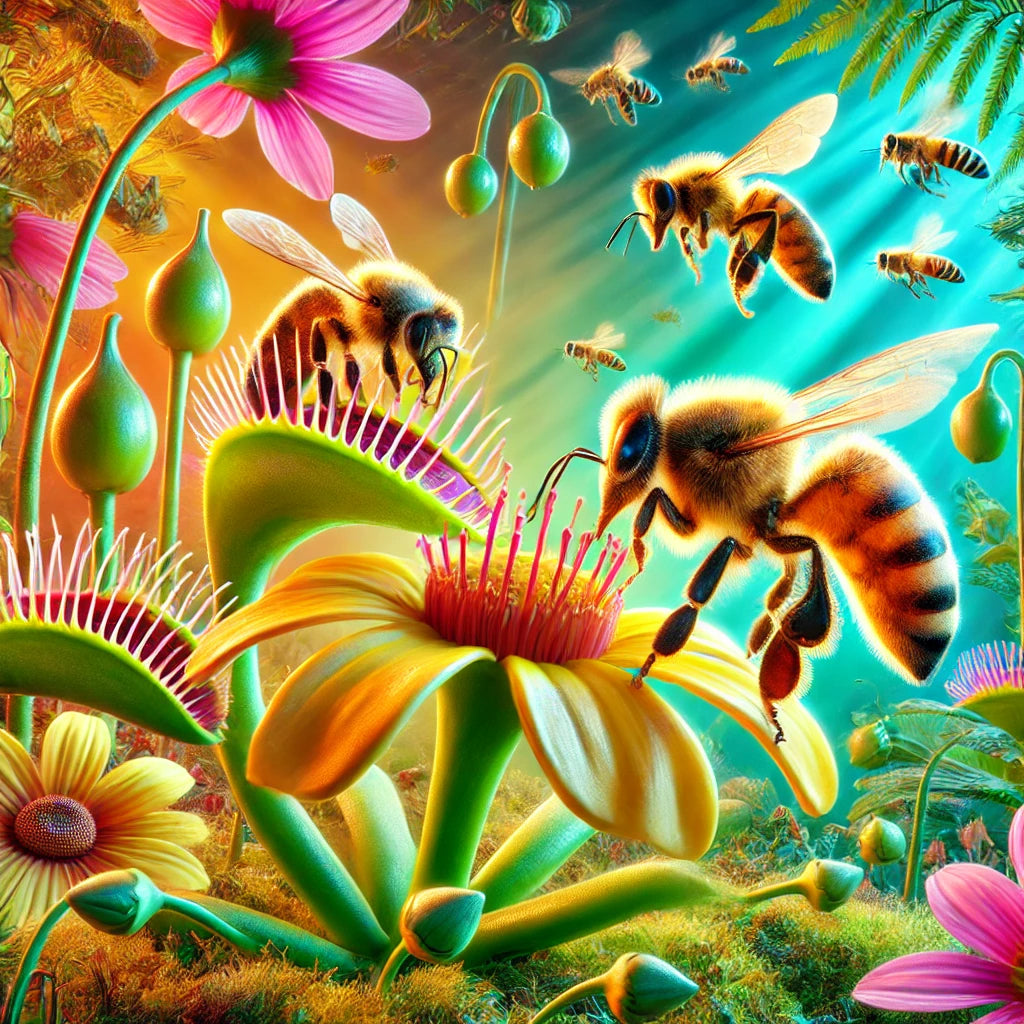Let’s start with the basics: how do you spell "pollinate"? It’s a simple word, but the world of pollination itself is far from simple. When it comes to the life cycle of bees, there’s much more than meets the eye, and myths surrounding pollination often leave people confused. This article will debunk two popular myths about pollination, particularly focusing on the Venus Fly Trap and Honey Bee.
Myth 1: Venus Fly Traps Are Pollinators
The first myth surrounds the famous carnivorous plant, the Venus Fly Trap. Most people think that because it catches insects, it doesn’t contribute to pollination. However, this myth needs debunking. Venus Fly Traps do indeed trap insects, but they also rely on pollinators to reproduce. Insects like bees and butterflies help pollinate these plants, which ensures that new Venus Fly Traps grow. The act of catching insects has more to do with the plant's need for nutrients, not its pollination process. This makes the Venus Fly Trap both a predator and a pollinator-reliant plant.
Myth 2: Honey Bees Only Make Honey
One of the most common misconceptions is that honey bees are only valuable for producing honey. In reality, why honeybees are vital to agriculture goes far beyond honey production. Honey bees are responsible for pollinating nearly 80% of all flowering plants, including many of the crops we eat. The health of entire ecosystems depends on the work of these busy bees. Their role in agriculture and their contribution to pollination make them one of the most essential pollinators on Earth.
Venus Fly Trap vs. Honey Bee Pollination: Key Differences
Though both play roles in pollination, Venus Fly Traps and honey bees couldn’t be more different in how they contribute to ecosystems. Honey bees actively collect pollen and nectar from various plants, contributing to their pollination, whereas the Venus Fly Trap relies on external insects to facilitate its reproduction process. While honey bees engage in deliberate pollination, Venus Fly Traps benefit indirectly from it.
Why These Myths Matter
Understanding these myths is important because it highlights the role of biodiversity in maintaining a healthy ecosystem. When we spread myths, such as the Venus Fly Trap being useless for pollination or honey bees existing only for honey, we lose sight of the bigger picture. Pollination is a delicate balance of many creatures working together to keep ecosystems thriving. Even small actions, like setting up bee trap attractants, can help ensure that bees continue their essential work.
Support Pollinators with the Right Tools
Both the Venus Fly Trap and the honey bee play essential but very different roles in the world of pollination. While one captures insects to survive, the other thrives on pollination for food production and ecosystem health. Next time you see a honey bee swarm or a Venus Fly Trap in action, remember that they each have a role in keeping our world balanced.
Help protect pollinators like honey bees by using Swarm Commander products such as attractants and traps to ensure a thriving environment. Explore more about supporting bees and their role in agriculture today!
Frequently Asked Questions About Pollinate Myths
Q1. Do Venus Fly Traps only trap insects?
While Venus Fly Traps are famous for trapping insects, they still rely on pollinators like bees to reproduce.
Q2. How do honey bees contribute to agriculture?
Honey bees pollinate over 80% of flowering plants, which include many of the crops we eat.
Q3. What’s the difference between a pollinator and a predator plant?
Pollinators, like bees, actively transfer pollen, while predator plants, like Venus Fly Traps, use insects for nutrients.
Q4. How can I help support pollinators in my garden?
Use Swarm Commander products to create a welcoming environment for honey bees.
Q5. What attracts honey bee swarms?
Honey bees are drawn to specific scents, such as those found in bee trap attractants, which mimic pheromones.



